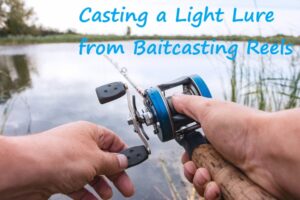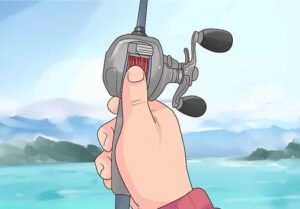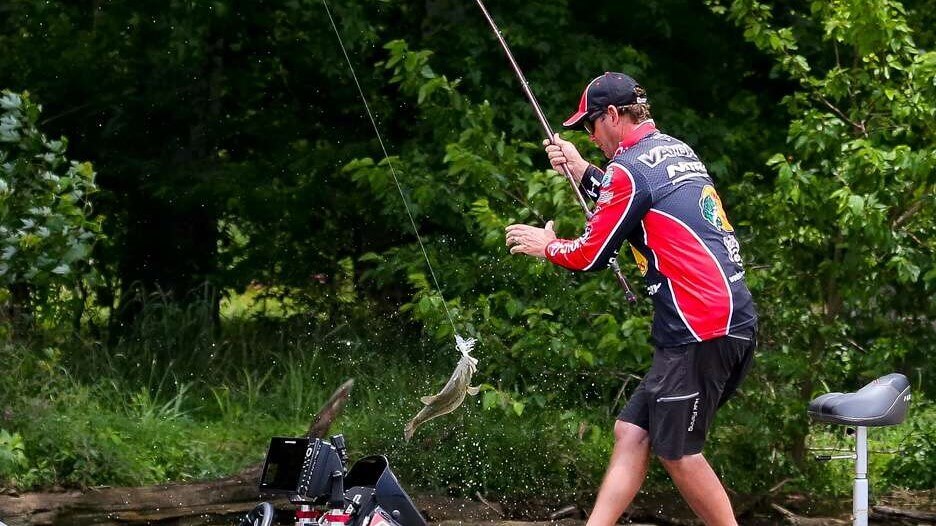
Fishing is a leisurely activity that is revered by many professional fishermen as well as hobbyists.
Every person considers themselves the best of the best, but the truth is that there is more to fishing than just throwing a hook in a body of water and waiting for a catch – there are many techniques and technicalities that you must know about.
Many agree with the concept of using light lures as a professional technique when fishing for relatively large fishes in either freshwater or saltwater.
If you want to try out this technique, this article is a complete guide on casting a baitcaster with a light lure – read on to find out more!
What are light lures?
Light lures are essentially minimal sources of light that can be attached to a fishing line. They come in various sizes and shapes, and the most common light lures resemble small creatures that are prey for the type of fish you are trying to catch.
These lures are an excellent way to catch fish since they can be illuminated when in water, and you can actually see where your hook is when you cast it through the baitcaster.
Light lures are a relatively new concept in the fishing world, but their benefits are very well-known.
Every different type of light lure has another purpose as each light lure can attract a different kind of fish to the hook when under the water.
If you are new to fishing and have no idea how a light lure is used and what equipment it is compatible with, do not worry – you can quickly master its use in a couple of weeks!
You must pay attention to specific factors when looking for equipment needed for casting a light lure into the water. It would be best if you had specific equipment that can hold enough fishing line for casting out.
Furthermore, it would help if you had a good quality reel and rod so that your light lure can travel further distances.
The necessary equipment that would be required to learn how to cast a baitcaster with a light lure is listed below:
- Baitcasting reel
- Fishing rod
- Fishing line
- Quality light lure
Fishing Equipment
You can find all the necessary equipment for fishing either online or in stores. It is best if you buy the components of your equipment separately and assemble them yourself.
This way, you know what your fishing equipment is capable of, which is the first step towards becoming a professional fisherman.
You should also buy the components separately because you do not know the limitations of a pre-built fishing rod-reel configuration.
If you want to become a professional fisherman, you need to assemble your equipment yourself and gain experience. One of the most important requirements for casting a light lure is to have a good-quality reel and rod setup.
Best baitcasting reel for light lures

A good-quality baitcasting reel is essential for fishing when attaching light lures to the fishing line.
The primary operating component of any baitcasting reel is the gear system within the reel’s housing frame. The gears are what drive the entire reel.
The gear system has the job of pulling a fishing line when it is hooked and allowing enough fishing line to pass through when casting out the line.
It contains a bunch of gears and ball bearings. The gears consist of teeth that allow them to work in sync with the other components, and the ball bearings are used to limit the friction between the two axes when a load is applied.
Ball bearings
If you are going to cast a light lure, you need a casting reel with many ball bearings. These ball bearings ensure minimum friction between each moving part, and therefore, more power can be delivered to the fishing line when it is being cast.
Durable housing frame
Apart from the ball bearings, a good baitcasting reel also needs to have a suitable housing frame.
There are multiple options for the type of housing frames available for reels, and they are filtered based on the materials used to design them. The materials are described as follows:
- Metal
An all-metal body would not be suitable for casting a light lure. This is because the metal would make the reel heavier and, therefore, harder to handle.
If you want a metal body for your reel, you should buy reels made from lightweight metals such as aluminum.
- Plastic
A plastic body is light enough for you to cast out the light lure easily, but its integrity is limited. It might be easily damaged if it is put under too much pressure.
- Carbon
This type of housing-frame is the best option when choosing a baitcasting reel to cast a light lure. It is lightweight and has the structural integrity of metals. It is also rust-resistant and can last longer in the open atmosphere.
As such, we can say that a carbon body is the best configuration to cast light lures from your baitcaster with maximum efficiency and ease.
Best fishing rods for casting light lures

The power for casting a light lure comes from the casting reel, but the actual momentum is carried through the fishing rod.
The fishing rod is important if you want to cast your line further to catch larger fish that swim in deeper waters away from the shore.
There are many different types of fishing rods that you can buy from stores that fulfill the requirements for casting light lures.
Metal rod
Suitable fishing rods for casting a light lure are made of metal or flexible carbon. As we all know, metal is heavy, whereas carbon is lightweight. In the case of a fishing rod, it is better to purchase a metal one.
The metal rod’s extra weight will provide momentum to the light lure when it is being cast into the water. This momentum will help your light lure reach greater distances after it is cast.
Since the big fish swim in deep water and such water bodies are found a little further off the coastline, you need a metal rod for this purpose.
Carbon rod
A carbon fishing rod is also suitable for fishing, but its lightweight can throw your aim off balance and might result in a failed cast. This is when your hook might get tangled onto your clothes or anything close to you.
As such, we would suggest that you choose a metal fishing rod for casting a light lure into the water.
If you use a carbon rod, you would need to use a heavier lure so that there is at least one component that has extra weight for the momentum needed to cast it out.
Best fishing line for casting light lures
A light lure is relatively heavy, and when fishing for large fish, you need to ensure that the primary weight attached to the fishing line is as little as possible. This way, you have more room to spare for the fish that you might catch.
A fishing line is the main component of fishing equipment, and its durability is important when fishing using light lures attached to the line.
This point refers to the fact that any large fish requires a good-quality fishing line if you want to pull it out of the water.
Types of fishing lines for light lures
There are many types of fishing lines. However, when using light lures, it is best to use multi-stranded fishing lines to ensure that your line can handle the light lure’s extra weight.
For such purposes, you need the following types of fishing lines.
- Thermal-filament fishing lines
These types of fishing lines are multi-stranded. They are designed using thermal reactions to bond multiple strands of strings together to form a single heavy-duty fishing line.
This final line is exceptionally durable and can withstand large amounts of pressure.
- Braided-filament fishing lines
Braided lines also contain multiple strands of filaments and are held together by small braids. These fishing lines can withstand a lot more weight and therefore are useful for catching large fish.
Mono-filament designs can also be used for catching relatively small fish. However, if you cast a fishing line using light lures, it is redundant to fish for small fishes.
Light lures are useful for deep-water fishing since they attract fishes to the attached bait.
Light lures
Light lures are small pieces of plastic shaped into small water animals such as prawns, shrimp, or other similar creatures. They consist of beautiful lights to large fish such as tuna that swim in deep waters.
A good-quality light lure can be used multiple times without any need for replacement. It should have a significant light source that can be seen by fish from far distances. Fishes are attracted to the light, which makes it easier to catch them.
How to cast a baitcaster with a light lure
You can have the best equipment, but you still might not be able to correctly cast your light lure. One of the most common results of miscasting light lures is the line and hook getting snagged either onto your clothes or other objects around you.
Setting up your equipment
When casting light lures, be sure that there are no foreign objects such as clothes or fabrics close to your setup since a hook might get snagged onto them.
This situation is extremely undesirable since it can be challenging to remove the hook if it gets caught on you or your clothes.
Your equipment must be set up correctly. If it is your first time casting a fishing line, make sure there is no one near you so that the hook does not get snagged onto someone else. Try to practice swinging before actually casting the light lure out to sea.

Step-by-step guide for casting light lures using baitcasting reels
If your fishing reel has a braking system, disable that before preparing your line to cast the fishing line with the light lure attached. Once you disable the brakes, put your reel in the open-cast configuration.
- Attach the light lure to the fishing line.
- Pull down the line a little until the lure pulls the line down itself.
- Now adjust your brake accordingly. It is recommended that you set it at halfway.
- Drop the lure with at least 2-3 feet of line. Gravity will allow the lure to do this for you.
- Do not whip the rod quickly. Your hook might get snagged, or it might not even get lifted. If it is a heavy lure, you should avoid whipping the line and rod in a quick motion.
- Take a long and slow cast. Then release your light lure just before you whip the rod. Your rod will channel the reel’s power and the actual component that will send the lure to a far distance.
- Use your wrist to cast the lure instead of your shoulders. This way you can, you can avoid any equipment mishaps if you perform a failed cast.
- Ensure that your arm is tucked in so that your casted lure is on a smooth path to its destination.
Practice as much as possible to perfect the aspects of casting a light lure, and you will eventually become a professional!
